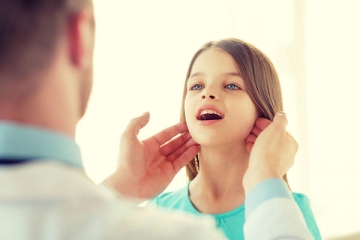Lymph nodes are an important part of the immune system. They fight infections that enter the body. Therefore, the lymph nodes often grow, especially in children.
Lymph nodes in specific areas of the body are part of the bloodstream. These are mainly under the armpits, abdomen, chest, chin, throat, neck, clavicle, etc. occurs in parts such as. Lymph nodes stimulate the body's fight against harmful pathogens and protect the body from them. The function of the lymphatic system is to protect the body from germs and prevent the spread of cancer cells in the body.
Why do the lymph nodes grow?
Infection is the main cause of enlarged lymph nodes in both children and adults. However, harmful factors such as bacteria, viruses, fungi, parasites and the formation of cancer cells can cause the lymph nodes to grow. In most cases, upper respiratory tract infections, pharyngitis, gum infections, skin infections, lower respiratory tract infections, and infections in the genital areas enlarge the lymph nodes.
Growing lymph nodes should return to normal within 2 weeks
In children, the lymph nodes in the neck area grow more. Because viral infections in the upper respiratory tract directly affect the neck. Measles, mumps, and influenza are the most common infections. When the lymph nodes are enlarged, be sure to consult a doctor.
The growth of these glands can take many forms. Lymph node enlargement can be determined first by manual examination and then by the results of laboratory tests. Lymph nodes may be mobile or immobile, very large or small, red or normal, painful or painless. If there is an infection in an area close to the lymph nodes, the cause of this growth may be that infection. For example, if conditions such as stomatitis, pharyngitis, or the flu are observed, they are considered to be the main cause of enlarged lymph nodes. Lymph nodes can sometimes grow due to a virus or infection that threatens the whole organism. However, the growth of lymph nodes in children is often due to infection.
If treatment is delayed, surgery may be needed
After the analysis, the patient is prescribed infectious treatments. In pediatric diseases, the lymph nodes can sometimes shrink, even without intervention. However, in cancers associated with cancer, appropriate treatment is prescribed for this disease. If you experience enlargement of the lymph nodes in the above areas, consult a doctor. With the right treatment prescribed at the initial stage, the problem will be solved as soon as possible. However, surgery may be prescribed if a delay occurs.
Dear mothers, if you come across an enlarged lymph node in your child, first find out if the child has any infection. Then consult a doctor. However, keep in mind that enlarged lymph nodes are not always an indication of cancer.


